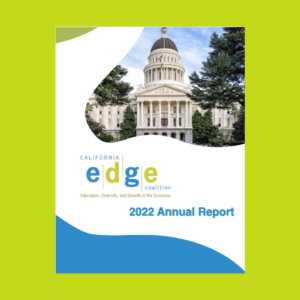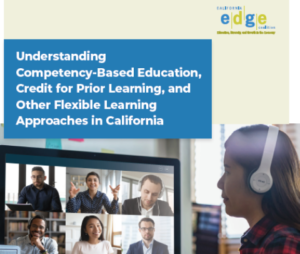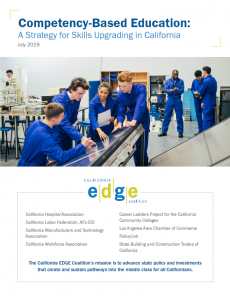
2022 Annual Report
Dear Friends, California has a staggering number of unfilled good jobs and an incredible pool of talent living in poverty or below a living wage.
Across the nation, there has been a surge in efforts by the federal and state governments and by education and workforce institutions to develop data systems to answer critical policy questions, implement effective practices, and improve student outcomes. California lags behind most states in tackling the data challenge.
This policy brief details why we need good data on workforce education and training programs, the range of data that are necessary, the characteristics of data systems designed to serve the needs of all major stakeholders, and what other states are doing to implement high-quality workforce data systems. To learn more, download the full text of the article here.
Ideally, a state’s data system includes pre-K, K-12, postsecondary education, workforce programs, social services, and other critical state agency data systems.
Data systems should be able to track students over time, across institutions and programs, and into the labor market.
At least in the case of workforce programs, including career technical education (CTE) programs, metrics should be consistent.
For data to be useful, they must be regularly updated.
Even to meet the needs of institutions, data systems must have both aggregate and individual uses in mind.
Systems must be designed so that the data of individual students and participants are protected and remain private. All stakeholders do not need access to all data. At the same time, for data systems to be useful all stakeholders must have timely and ready access to the data they do need to make informed decisions.

Dear Friends, California has a staggering number of unfilled good jobs and an incredible pool of talent living in poverty or below a living wage.

EDGE recently partnered with the California Association of Alcohol and Drug Program Executives (CAADPE) to publish a new report, Identifying Barriers to Employment After Substance

Dear Friend, I’m excited to bring you the first annual State of the California EDGE Coalition Report intended to provide you with an overview of our successes

Postsecondary credential attainment is a primary path to economic and social mobility. However, more than 5.5 million Californian adults have some college but no degree and are no longer enrolled. For millions more who are juggling personal and work responsibilities, fitting college into an already hectic life seems impossible.

. A new policy brief released by the California EDGE Coalition examines the ways in which other states are now successfully employing competency-based approaches to teaching and learning which allow students to move flexibly – and often much more quickly – through an educational program that is designed to make sure they know and can do what is expected of graduates.

Many Californians face significant financial, educational and navigational barriers to completing the education and training they need to succeed in today’s labor market. Read our latest publication, Making Certificate and Degree Completion More Affordable and Accessible for Low-Wage Workers